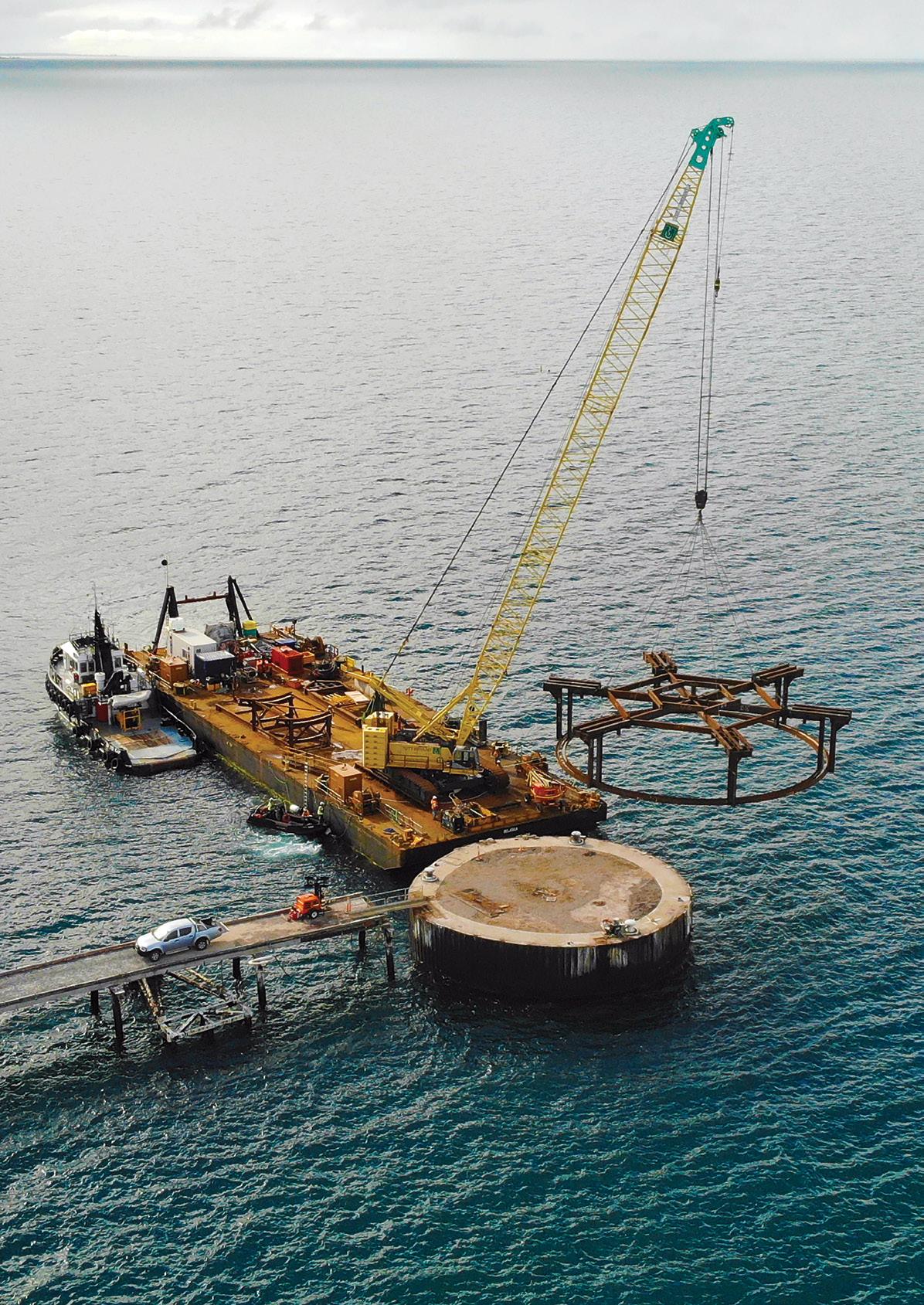
4 minute read
How Maritime Constructions navigates risk
Marine construction work involves a set of risks not encountered when doing onshore construction work. Justin Phillips, Asset Manager for Maritime Constructions, talks to Working Boats .
By Ron Aggs
Advertisement
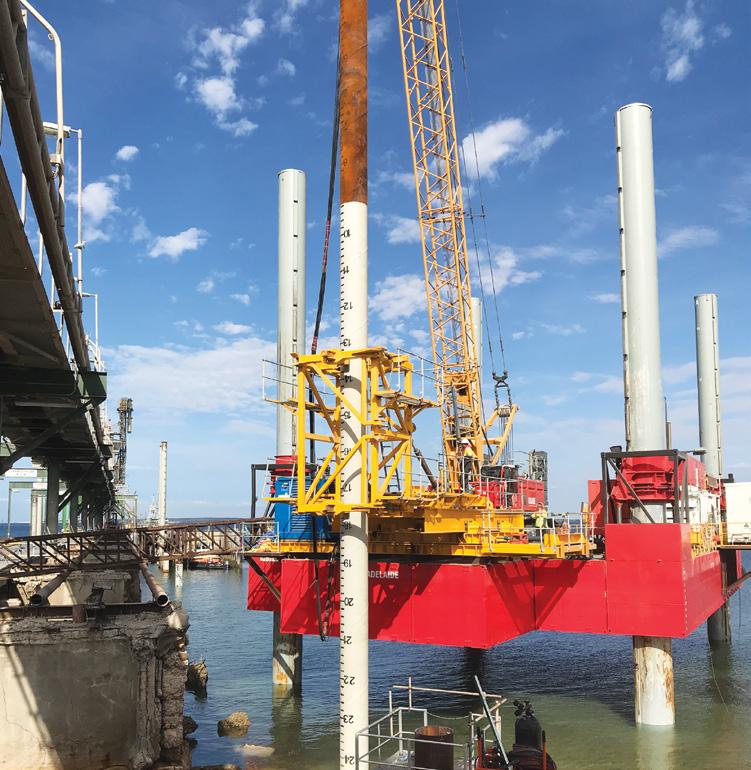
Monitoring risk: Jack up barge Resurgent driving a pile at Thevenard, SA
Images supplied by Marine Constructions

Daily toolbox with the team
Based in Port Adelaide in South Australia and with a branch office in Perth, Maritime Constructions designs, constructs and maintains marine infrastructure—including dredging, navigation aids, jetties and wharves, sub-sea intake and outfall pipelines, boat ramps and marine fabrication.
Justin explained that working from floating plant introduces a broad range of risks in their line of work.
‘Sea conditions coupled with limited geotechnical information and environmental sensitivities (marine life—fish, birds, plants and water quality) can also be dynamic and difficult to control,’ he said.
‘Oil or fuel spills or hydraulic hose bursts pose the greatest environmental risks, having a potential to impact marine life and water quality. We manage and mitigate these risks through the use of proprietary marine spill kits, biodegradable oils, and industry best practice risk assessments.’
‘Then there are the weather conditions, which can change very quickly—for example, random wind gusts when pitching sheet piles, or changing seas during towing,’ he added.
Justin said Maritime Constructions monitors daily and long-range weather forecasts, but they also rely on a jackup barge that provides a safer, stable work platform.
Used on around ten per cent of projects, the barge has workable deck space of 24 by 17 metres on four legs that can extend down to the sea floor and be jacked up to raise the deck clear of the water.
Justin explained that even with the increased stability that the jack-up barge provides, the physical construction risks—such as crane lifts from barges—require extensive risk assessment and safety management.
‘Some construction jobs are simple, light and easily executed, while others are large, heavy and complicated,’ Justin explained.
‘We manage the risks by understanding what we are lifting and the location, how the barge will react to weight distribution, and by carrying out trim and stability checks on the lift,’ Justin said.
Maritime Constructions uses a risk matrix and hierarchy of controls to identify and mitigate risk.
When assessing each risk they look at the degree and type of impact each risk carries—for example whether it could result in injury or loss of human life; structural, social or environmental impacts; contractual implications; financial loss; legislative impacts or even reputational damage for the company.
Leading up to each project, managers, site and construction teams use these methods to assess the risks and jointly prepare safe work method statements, including safe work procedures and crewing competencies required for the job. These risk assessments and safety management plans also complement the safety management systems of each vessel being used on the job.
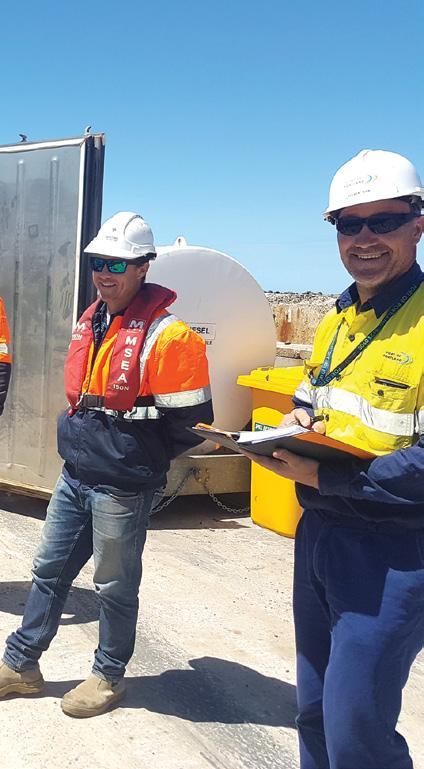
Daily toolbox with the team
To ensure their safety practices stay relevant to the task at hand, each week the work method statements are reviewed and updated by employees who meet before work to discuss the day’s activities.
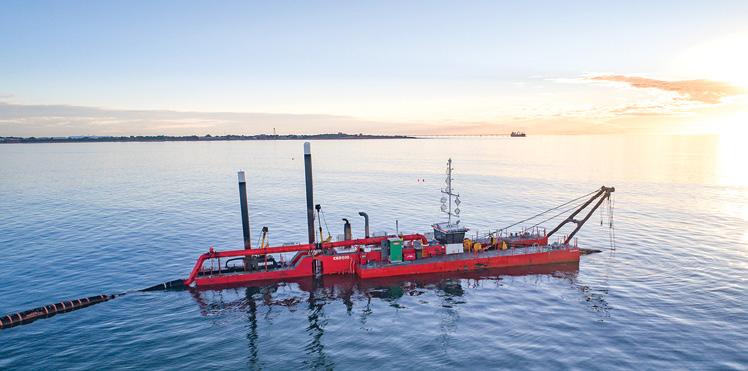
Cutter suction dredge Pilbara Sawfish dredging at Onslow, WA
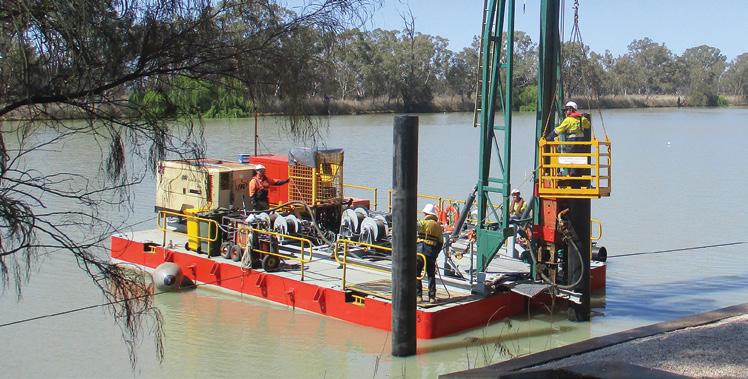
Cutting pile to height Barmera Waste Station Murray River, SA
However Justin said that even with all the planning that goes into making sure they have identified and mitigated all the risks for a job, individual workers’ misperceptions that working conditions are safe still tests this daily agenda.
Last November, while loosening a pipeline flange from an awkward position on the edge of a dredge, a worker lost balance and fell overboard when his spanner slipped off a bolt.
Fortunately, he was wearing a lifejacket and colleagues quickly pulled him back on board, but everyone agreed the danger of awkward positioning could have been averted by doing the job from a small tender, and the safety management system was updated to reflect this.
The incident also reinforced the value of their take-5 system, which encourages workers to pause before any major or high-risk task to reassess better or safer ways of going about it.
‘We also ask crew members to complete hazard observation cards during a job. It is not unusual to be working off a ninth revision of a safe work method statement by the end of an activity,’ Justin said.
Reporting near misses helps AMSA improve safety across industry. Read more on page 38.
Maritime Constructions also recently implemented what they call ‘quarterly focus areas’ to increase attention to detail and surveillance.
Senior management and health and safety officers decide which risk areas need additional attention—in the last quarter the focus has been on lifting equipment, lift plans, chemical storage and emergency drills.
However Justin knows all too well that developing an effective safety culture involves more than having all the safety documentation in order and conducting frequent checks.
To encourage safety practices from the ground up they encourage friendly competition between project sites to be the first in the quarter to achieve focusarea goals, and Justin says the teams quickly rise to the challenge.
‘When you start pitting site against site they become quite competitive and there’s a quick response to whatever the quarterly focus area is—the following week we start getting responses from teams,’ Justin said.
‘In addition to the pride of winning the quarterly challenge, the winning team gets a company-paid BBQ. Irrespective of whether there are five of fifty people on the winning site, they are catered for appropriately.’
maritimeconstructions.com.au








